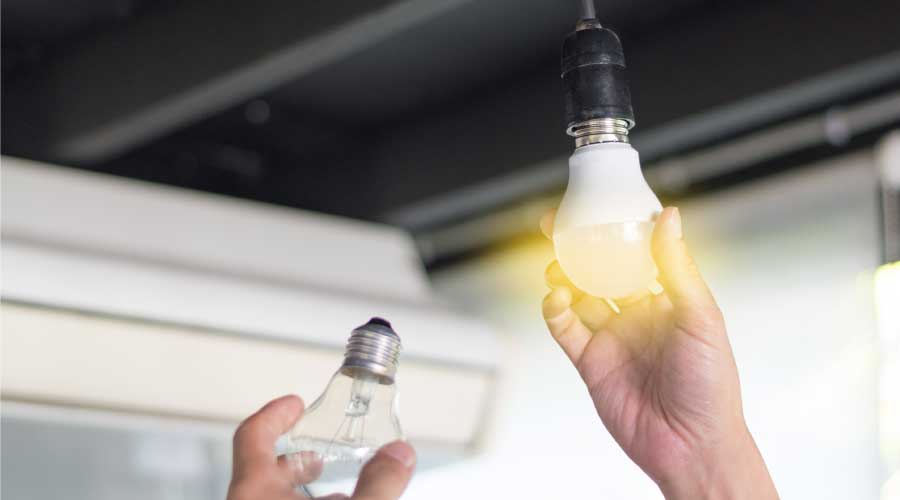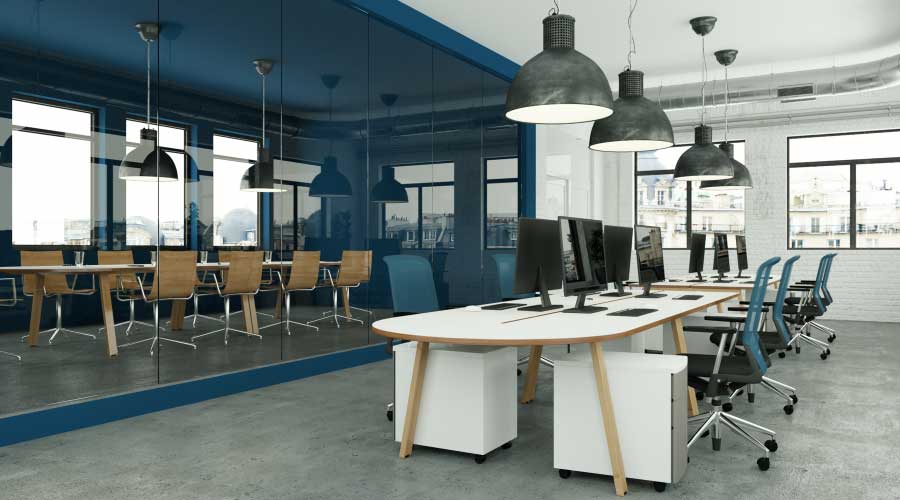Fluorescents, Metal Halides, LEDs Are Among Choices To Replace Incandescents
The next step in the upgrade journey is ensuring the light sources specified deliver proper light levels, are efficient, and suit the needs of a facility. Advances in lighting technology have given facility executives a wide variety of good choices for replacing incandescent lighting and upgrading other lighting categories, including fluorescents, metal halide and more.
"Facility managers not only need to inquire about the latest and most efficient (and efficacious) light sources, but also learn what is the best source for the application," says Rob Freitag, vice president of marketing for EYE Lighting International.
For example, linear fluorescent lighting has a wide range of options with varying degrees of efficiency, notes GE's Brelus. "Traditional halo-phosphor T12 lamps had a nominal lumens per watt (LPW) in the mid to high 70s," he says, while 32W T8s have a nominal LPW in the low 80s. The most efficient T8 and T5 options can have nominal LPW exceeding 100, Brelus explains.
It's evident that a simple switch from T12 fluorescent lighting to T8 or T5 will guarantee a more efficient light source. For example, fluorescent twin T5 systems might provide the best results for many dirty, interior environments, as well as exterior applications for security, area flood, parking garages and even some sports lighting applications, according to Magnaray's Leetzow.
And as Philips' Casanova notes, "The typical industry standards seem to have settled in the 25- to 28-watt range for 4-foot T8s."
In a real-world example, Medical Mutual of Ohio recently upgraded aging lighting in Cleveland's historic Rose Building, its headquarters location since 1948. The 16-floor, 381,000-square-foot facility (including an annex) had an outdated lighting system of nearly 3,000 T12 deep cell parabolic fixtures. After a professional lighting audit and working closely with engineers, the company upgraded its system with a retrofit kit that fits into existing fixtures but uses T8 lamps and electronic ballasts and provides a new appearance and improved light quality. Each new fixture saves 61 watts compared to the previous fixtures, according to Lithonia Lighting, an Acuity Brands company.
Another efficient upgrade is the replacement of traditional high pressure sodium and probe-start metal halide lighting in outdoor, industrial and high-bay applications with more efficient technology.
"Pulse-start quartz metal halide can be an upgrade to standard quartz lamps, delivering better lumen maintenance and less color shift," explains Cheryl Ford, marketing manager for OSRAM SYLVANIA. Lighting experts say that the life cycle of pulse-start metal halide is superior to probe-start metal halide.
Additionally, ceramic technology HID lamps are widely available in a wide array of wattages, which makes this category attractive, according to EYE Lighting's Freitag.
"Advances in this technology offer a very high LPW (lumens per watt) rating (efficacy), which allow for significant reductions in energy without sacrificing light levels and improving color rendering characteristics," Freitag says.
Perhaps the biggest revolution in lighting upgrades centers around light emitting diode (LED) technology, particularly in such applications as recessed downlighting, wall sconces, task lighting, track lighting, landscape and accent lighting, to name a few.
"Certainly replacing older, inefficient fluorescent lamps and ballasts with the latest fluorescent technology offers significant savings, but in applications with longer burning hours, LEDs can provide an even more compelling alternative," Juno's Roos says. In those applications, Roos says, the improved performance, energy savings and significantly reduced maintenance costs contribute toward a strong ROI for LEDs.
What's more, the cost of LED technology is continuing to fall and the efficacy is still improving. It is leading to more viable — and efficient — solutions.
Related Topics:














